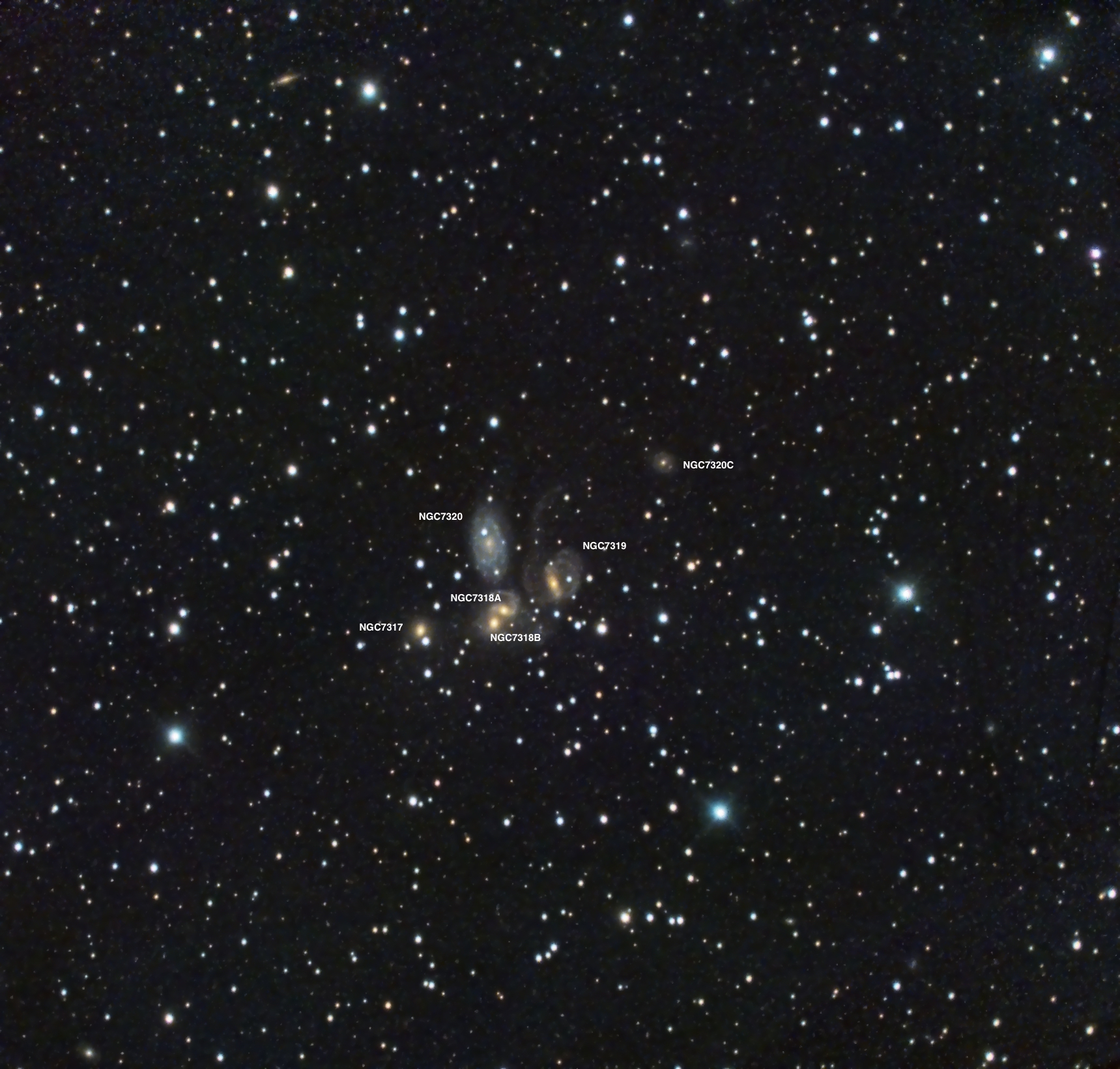I have posted an image of Stephan’s Quintet in Pegasus, acquired with my Obsession and Mallincam Universe CCD camera. See the bottom image on this page. This is a famous compact galaxy cluster, and is listed as HCG 92 in the Hickson Compact Groups catalog of 100 such groups. The data for the image were acquired in 2014 and 2015, and the result is composed of 983 frames, each of 10 seconds duration. As I have previously noted, I am challenged by an altazimuth mount and no guiding with my dobsonian reflector, and so am limited to very short exposures.
Here is a labelled version of the image.

As a general statement, Stephan’s Quintet is a group of interacting galaxies. For example, NGC7318A and NGC7318B are clearly performing a cosmic dance. One peculiar aspect of the quintet, however, is that NGC7320 is really not a true participant, as it resides some seven times closer to us than the remaining galaxies and simply happens to be in the line of sight near the true members of the group. (One source gives the distance to NGC7320 as 40 million light years, whereas the other members are roughly 290 million light years away.) But, all is not lost if one wishes for five members in the dance, as there is some evidence that the relatively lonely NGC7320C may in fact be tidally connected to the group.
The Hickson catalog contains many excellent visual targets, especially for medium to large aperture telescopes. Stephan’s Quintet is not the easiest nor the most difficult member of the catalog, and I recommend trying your luck this coming fall. Below is the log of an observation I made in 2009 at Zephyr Ridge Observatory under less than ideal conditions using my 20” Obsession at 212x magnification:
“There is flat triangular asterism of three stars that anchors the group. I first came to NGC7319 and NGC7320, just south of the asterism. NGC7319 appeared as a faint glow which degraded as I viewed (conditions may have been deteriorating slightly during this observation). NGC7320 is larger and exhibited a stellar nucleus. West of this pair, I saw a fuzzy patch containing two stellar pinpoints which were doubtless the stellar nuclei of NGC7318A and 7318B. A little SW of that pair, I saw a small smudge next to a star which, with averted vision, also contained a stellar nucleus. This was NGC7318. So, I identified all five galaxies.”
Hmmm. I failed to mention NGC7320C. Perhaps I will follow my own advice and take another look!
Denis

One Response to Stephan’s Quintet